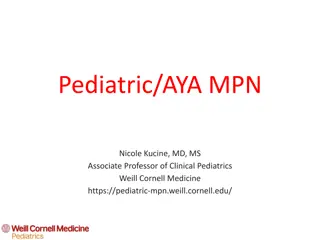
Scandinavian Influence on English Language and Place Names
Discover the rich Scandinavian influence on English vocabulary, morphology, and syntax, with over 600 place names bearing Scandinavian origins and key linguistic elements such as pronouns, prepositions, and inflections shaping the language evolution.
Download Presentation

Please find below an Image/Link to download the presentation.
The content on the website is provided AS IS for your information and personal use only. It may not be sold, licensed, or shared on other websites without obtaining consent from the author. If you encounter any issues during the download, it is possible that the publisher has removed the file from their server.
You are allowed to download the files provided on this website for personal or commercial use, subject to the condition that they are used lawfully. All files are the property of their respective owners.
The content on the website is provided AS IS for your information and personal use only. It may not be sold, licensed, or shared on other websites without obtaining consent from the author.
E N D
Presentation Transcript
More than 600 places bear Scandinavian names. About 300 names contain the Scandinavian word thorp. In some districts in the counties of Yorkshire and Lincolnshire about 75 percent of the place-names are of Scandinavian origin.
The number of Scandinavian words that appeared in Old English was small, amounting to only twenty words. The largest group was associated with sea-roving, as in barda (beaked ship), cnearr (small warship), ; (vessel; (fleet), ;mann (pirate), dreng (warrior), b tswegen (boatman), hofding (chief), orrest (battle), r n (robbery, and fylcian (to collect a force). A little later, a number of words relating to the law or the social and administrative system entered into English. Examples include the word law itself, as well as outlaw, wapentake (an administrative district), h sting (assembly), which all come from the Danish language.
Among nouns were band, birth, booth, bull, calf (of leg), egg, fellow, gait, gap, guess, kid, leg, link, loan, race, root, scales, score, seat, sister, skin, skirt, sky, steak, tidings, trust, want, and window, among many others. Among adjectives we find awkward, flat, ill, loose, low, meek, odd, rotten, scant, seemly, sly, tight, and weak.
The pronouns they, their, and them are Scandinavian, replacing the Old English pronouns h e, hiera, and h e. The words both and same, which have pronominal uses, are of Scandinavian origin, too. The prepositions till and fro (from) are Scandinavian; the latter survives in the phrase to and fro.
The Scandinavian influence not only affected the vocabulary but also extended to morphology and syntax. Among these inflections are the s of the third person singular, present indicative of verbs, and the participial ending -and (bindand), which is now replaced by ing. The words scant, want, and athwart retain in the final t the neuter adjective ending of Old Norse.


